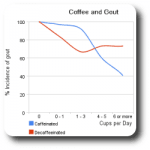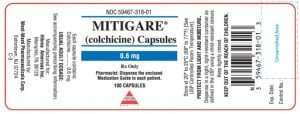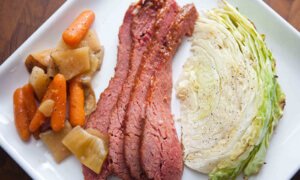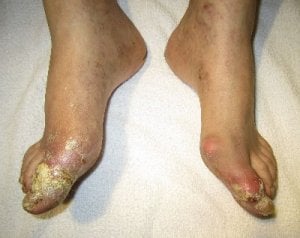Devil Claw, also called Devil’s Claw, is often sold as a treatment for various forms of arthritis, including gout.
The herbal gout treatment is extracted from the secondary roots of the Devil’s Claw plant (Harpagophytum procumbens).
When I first wrote this, there had been no studies of Devil’s Claw & gout. So I summarized 3 studies that looked at the anti-inflammatory properties. However, later studies have revealed links between Devil’s Claw and uric acid. So I’ve updated the comments section below. Pending my summarization of the latest science. Also, I will update the layout to reflect the role of Devil’s Claw in the GoutPal Plan for Gout Herbalists. Then you’ll know what you need to discuss with your doctor or professional herbalist.
Devil’s Claw and Gout
When studying the effect of Devil’s Claw on inflammation in rats, McCleod et al.[1] could find little positive evidence that it could help with arthritis problems:
in humans, Devil’s Claw when used at the recommended dose would not be expected to show anti-arthritic activity.
They did allow that investigation of much higher doses might show some benefit, but, as far as I can tell, no safety and efficacy studies have been carried out on very large doses.
Grahame & Robinson [2] looked at humans with arthritic conditions taking a dose of three 410 mg tablets each day for 6 weeks. This is a very small study of 13 patients, with one of those dropping out after 4 days due to side effects. Again, they could find little evidence of anti-inflammatory benefits, concluding:
The purpose of these studies was to determine whether a prima facie case could be made for undertaking further studies in patients, including controlled studies. The results described provide little justification for such action, and the usefulness of devil’s claw as an anti-rheumatic agent remains unproved.
Finally, Whitehouse et al.[3] also studied Devil’s Claw in rats, confirming earlier studies showing lack of anti-inflammatory properties. Furthermore, they compared Devil’s Claw with aspirin and indomethacin showing that these classic anti-inflammatory drugs both showed beneficial properties. They conclude:
These results indicate that Devil’s Claw lacks the anti-inflammatory properties possessed by all anti-arthritic drugs of the non-steroidal, anti-inflammatory analgesic type.
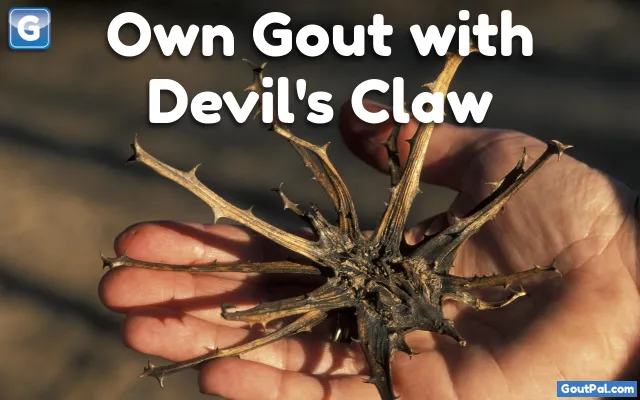
Next Devil Claw Gout Steps
You can see there is was very little scientific support for Devil’s Claw as a treatment for gout (see uric acid comment below). Questions remain whether there is a safe effective dose, but on the evidence to date, this appears unlikely. Better to focus on lowering uric acid with medical or natural treatments that have been proved to work.
Return from Uric Acid, Devil’s Claw, and Gout to continue your GoutPal Plan for Gout Herbalists.
Uric Acid, Devil’s Claw, and Gout Comments
GoutPal visitor responses and associated research include:
Devil’s Claw and Uric Acid
I’ve recently found research that indicates Devil’s Claw can reduce uric acid[4]. That is in addition to more confirmation of its anti-inflammatory properties.
biochemical variables reflected a significant increase in AST levels without any effect on the other liver enzyme. The compounds of Devil’s claw having anti-inflammatory effect might be held responsible for such an activity. After chronic treatment a decrease in blood glucose levels and uric acid levels of the animals in the treatment groups was observed as compared to the control. Our results of present chronic treatment also added support to the hypoglycemic potential of Devil’s claw noticed during acute treatment. The reduction in uric acid levels observed in treatment groups as compared to the control might be correlated to the analgesic, anti-inflammatory, anti-arthritis and antioxidant effects of Devil’s claw. The results of the present study supported the earlier findings which showed Devil’s claw harpagosides and other iridoide glycosides to be responsible for the herb’s anti-inflammatory, anti-arthritis and analgesic actions.
Therefore, you should discuss this with your herbalist as part of your gout pain and uric acid level management plan. In the meantime, I will do further research on “harpagosides and other iridoide glycosides”.
Also, this study has been included in a wider review of herbal treatments for gout[5]. So I will investigate:
- Betula pendula (Silver Birch or White Birch)
- Rosa canina (Dog Rose)
- Viola tricolor (Wild Pansy)
- Solidago virgaurea (Goldenrod)
- Agropyron repens (Quackgrass or Couch Grass)
- Aegopodium podagraria L. (Bishops Weed or Goutweed)
- Urtica dioica L. (Stinging Nettle)
- Equisetum arvense L. (Field Horsetail or Common Horsetail)
- Filipendula ulmaria (Meadowsweet or Queen of the meadow)
- Salix alba L (White Willow)
- Ononis spinosa (Spiny Rest Harrow or Restharrow)
- Prunus cerasus L. (Sour Cherry)
To get email when I publish this additional info:
Devil Claw Gout References
- McLeod DW, Revell P, Robinson BV. Investigations of Harpagophytum procumbens (Devil’s Claw) in the treatment of experimental inflammation and arthritis in the rat [proceedings]. Br. J. Pharmacol. 1979;66(1):140P-141P.
- Grahame R, Robinson BV. Devils’s claw (Harpagophytum procumbens): pharmacological and clinical studies. Ann. Rheum. Dis. 1981;40(6):632.
- Whitehouse LW, Znamirowska M, Paul CJ. Devil’s Claw (Harpagophytum procumbens): no evidence for anti-inflammatory activity in the treatment of arthritic disease. Can Med Assoc J. 1983;129(3):249-251.
- Al-Harbi, Naif O., Riyadh M. Al-Ashban, and Arif H. Shah. “Toxicity studies on Harpagophytum procumbens (Devils claw) capsules in mice.” Journal of Medicinal Plants Research 7, no. 42 (2013): 3089-3097.
- Jurczak, R. and Regu?a, J., 2016. Plant materials used in supporting the treatment of gout. Nauka Przyroda Technologie, 10(4), p.58.
Please give your feedback
Did this page help you? If yes, please consider a small donation. Your donations help keep GoutPal's gout support services free for everyone.
If not, please tell me how I can improve it to help you more.
- YouTube
- The gout forums.
